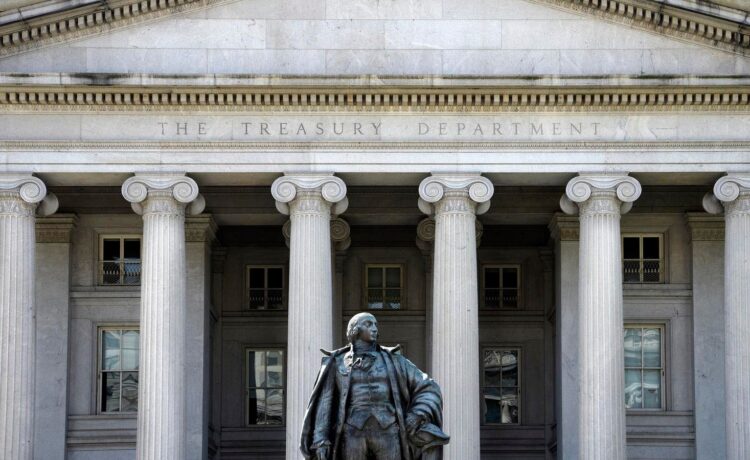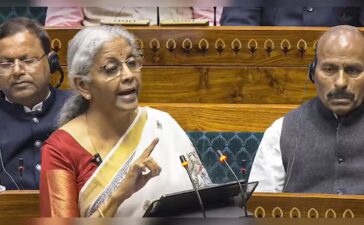Treasury policy aligns with technology policy to promote long-term growth in the United States. … [+]
In an all-encompassing interview with Bloomberg, U.S. Treasury Secretary Scott Bessent emphasized the Trump administration’s strategic focus on maintaining low 10-year Treasury yields. This approach marks a significant shift in economic and fiscal policy, which previously focused almost exclusively on pushing the Federal Reserve to cut its benchmark interest rate.
U.S. Federal Reserve Board Chairman Jerome Powell has overseen 100 bps in Fed rate cuts since Sep … [+]
Since the Fed began cutting interest rates in September 2024, 10-year Treasury note yields spiked from 3.6% in September to almost 4.8% in January. In the month since the last Non-Farm Payrolls report and the change in administration, yields have rallied by 30 basis points (bps), signifying increased demand.
Since taking office in January, the Trump administration has taken significant steps to demonstrate a commitment to strengthening U.S. leadership in innovating financial technologies. His crypto-focused executive order aims to establish regulatory clarity for digital assets and secure America’s position as a global leader in the digital asset economy.
Sen. Tim Scott, R-S.C. led Senate Banking Committee hearings on the practice of debanking. Hours … [+]
Over the past week, the Senate Banking Committee and the House Financial Services Committee held hearings on the aggressive enforcement actions and regulatory overreach during the Biden Administration. Commonly referred to as Operation Choke Point (OCP) 2.0, industry experts testified about how OCP 2.0 stifled innovation and growth in crypto and other “politically disfavored industries,” by providing little or no regulatory guidance and requests to “pause” banking activities with crypto companies, resulting in debanking.
Regulatory and legislative policy measures that foster innovation in digital financial technologies could work in tandem with fiscal policy to pave a path toward a more efficient U.S. financial system with positive implications for consumers.
The Role of Fiscal Policy
Secretary
Scott Bessent, US treasury secretary, right, during an interview at the Treasury Department in … [+]
Bessent’s comments highlight the importance of long-term interest rates in driving economic stability and growth. While the mainstream financial press focuses much of its attention on the U.S. stock market, the 10-year Treasury note is a cornerstone for the whole U.S. financial system.
The 10-year Treasury note yield is the benchmark by which mortgage rates and other loans are priced. … [+]
The benchmark reflects investors’ sentiments about the U.S. economy’s future and influences everything from mortgage rates to corporate borrowing costs. This relationship underscores the importance of maintaining low 10-year yields to support consumer spending and economic growth.
The 10-year note simultaneously serves as a bellwether for sentiment about general global stability. Backed by the full faith and credit of the U.S. government, U.S. bonds are considered a “flight to quality” investment. In times of global economic uncertainty or market volatility, investors sell riskier investments to buy U.S. Treasuries.
Price vs Yield
Financial press tend to focus on the stock market as a proxy for U.S. economic health and stability. … [+]
While stock investors talk about their assets in terms of price, bond mavens speak in terms of yield, which moves inversely to price. While this can be confusing for non-fixed income thinkers, bond markets, like all markets, respond to supply and demand.
Spend enough time on any trading floor and you’ll hear the most logical reason why any asset rallies (for 10-year notes, this means goes up in price, down in yield)– more buyers than sellers.
Innovation in Digital Financial Technologies: Catalysts for Efficiency
President Donald Trump signs executive orders in the Oval Office. His cryptocurrency-focused EO was … [+]
During its first month, the Trump administration has taken significant steps to promote innovation in digital financial technologies. Blockchain technology and cryptocurrencies are at the forefront of FinTech innovation.
Blockchain, a decentralized ledger technology, offers transparency, security, and efficiency in transactions. Cryptocurrencies, built on blockchains, provide new vehicles for digital transactions and financial inclusion.
Correlation Between Innovation and the Bond Market
For many, the correlation between technology innovation and the bond market can be elusive. While experts in both fields can point to the benefits in their own domain, the path to mutual benefit can be longer in duration (bond pun most definitely intended).
Blockchain technology can enhance the transparency and security of financial transactions, reducing the risk of fraud and improving investor confidence. This increased confidence can lead to greater demand for U.S. Treasury securities, including the 10-year note, thereby supporting lower yields.
The integration of blockchain and cryptocurrencies into the financial system can streamline payment processes, reducing transaction costs and settlement times. This efficiency can enhance liquidity in the financial markets.
USD₮ and USDC make up 86% of the rapidly growing stablecoin market. (Photo by Silas Stein/picture … [+]
Stablecoin development has been one of the fastest growing areas in the field. By mid-2024, there were over 180 stablecoin projects, a 574% increase over three years. Over 98% of the $230 billion stablecoin market is USD-denominated
If USD-denominated stablecoin issuers were aggregated and classified as a single investor, they would be one of the top 15 investors in U.S. Treasuries, somewhere between India and Brazil.
Increased confidence in the United States and the collateralization of stablecoins with U.S. Treasuries could both be catalysts for increased demand, driving prices higher and yields lower.
In turn, borrowing costs for consumers and corporations would decrease, making it more affordable to purchase homes and other goods and finance major capital expenditures.
The Long Game
Whether it’s technology or Treasuries, the ramifications of policy actions today may take time to manifest themselves. Like their namesake, 10-year Treasury notes reflect market expectations at that point in time. The uncertainty of such a long time horizon is reflected in the term premium, the extra compensation (higher yield) paid to investors for their investment in longer term bonds.
Standard rising yield curve. Context between the return and the maturity of a risk-free investment. … [+]
Treasury Secretary Bessent’s comments are aligned with technology policy mandates and reflect a nuanced understanding of the interconnectedness of fiscal policy, financial innovation, and market dynamics.
Focusing on 10-year Treasury yields instead of the Fed Funds rate is a change in fiscal policy. … [+]
By simultaneously encouraging digital financial technologies (cryptocurrency and blockchain) and implementing supportive fiscal policies, the Trump administration aims to create a favorable environment for economic growth driven by innovation. The focus on maintaining low 10-year Treasury yields is a strategic move that can benefit consumers, businesses, and investors alike. As we navigate the complexities of the modern economy, the integration of advanced technologies and sound policy measures will be key to sustaining long-term prosperity.

















